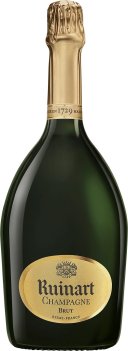$100 and over
Mount Mary Chardonnay
At Mount Mary they aim to make a Chardonnay of great length that is able to reach a balance between complexity & finesse. Unashamedly Burgundian in concept, local Yarra Valley practices are employed to fully express the unique terroir, including the wine not going through Malolactic fermentation as Mount Mary's cool-climate leaves the fruit with ideal acidity when picked. Matured in 20% new French barriques with the remainder in older barrels and large casks and along with grape solids, this is a Chardonnay of impressive texture and complexity.
Bouchard Pere & Fils
Domaine Lucien Le Moine 1er cru Genevrieres
Hartford Court Jennifer’s Chardonnay
Penfolds Yattarna Chardonnay
Penfolds Yattarna Chardonnay displays an initial bouquet of slate and wet stone, with nuances of lightly roasted almonds. Subtle hints of citrus, shrouded by nectarine and nashi pear fruits. On the palate, a spiced multi-citrus compote with a very delicate acidity. Balanced and will develop exceptionally well with cellaring.
Larmandier Bernier Latitude Non-Vintage
Latitude is a 100% Côte de Blancs Chardonnay, predominantly grown, as it always has been, in vineyards on the southern side of Vertus. These are vineyards on roughly the same
Bachelet-Monnot Puligny-Montrachet
Ruinart R de Ruinart Brut Non-Vintage
The blend is 100% Chardonnay from various years (20 to 25% of which are reserve wines from the 2 previous years). A large majority of Premiers Crus from the Côte des Blancs and Montagne de Reims vineyards for aromatic refinement, supplemented by Sézannais wines known to provide maturity. Finally, several wines from the north of the Vesle valley give a light, fresh touch.
Dom Ruinart Blanc de Blancs
Product Description Dom Ruinart Blanc de Blancs 2013 is a rare and exceptional cuvée that reflects the unique characteristics of a vintage marked by a very late harvest. The year 2013 stood out with cool and rainy weather, resulting in a delayed harvest that only began at the end of September. This late ripening process gave rise to grapes with a rare balance of freshness and depth, producing a wine of great finesse and complexity. The blend is made exclusively from Grand and Premier Cru Chardonnay, with 70% sourced from the Côte des Blancs and 30% from the Montagne de Reims. With over 9 years of ageing on lees and a dosage of 5.5 g/L, this Champagne presents the ultimate expression of Ruinart’s commitment to craftsmanship and quality. The result is a cuvée with an extraordinary combination of freshness, depth, and a distinctive toasty character. The wine is vinified with meticulous care, following traditional techniques such as manual disgorgement and ageing under cork, a process that imparts a unique richness and subtlety to the wine. The late ripening of the grapes gives the wine its unmistakable structure and precision, while the chalky terroir of the Côte des Blancs and Montagne de Reims provides a mineral backbone that enhances the wine’s complexity. Dom Ruinart Blanc de Blancs 2013 is a Champagne that balances elegance with boldness, and its unique character makes it a true standout in the world of luxury Champagne. Maker The House of Ruinart, founded in 1729, is one of the oldest and most prestigious Champagne houses, known for its uncompromising dedication to quality and craftsmanship. Ruinart is renowned for its exceptional Blanc de Blancs, a signature style that showcases the elegance and freshness of Chardonnay. Each cuvée is a reflection of the House’s century-old legacy of blending expertise, rooted in the distinctive terroirs of Champagne. Ruinart’s commitment to excellence is evident in every bottle, from the selection of the finest vineyards to the meticulous ageing process in the cellars. At the helm of Ruinart’s winemaking is Cellar Master Frédéric Panaïotis, who brings his passion for Champagne and his innovative approach to the craft. Under his leadership, Ruinart continues to create wines that push the boundaries of what Champagne can be, balancing tradition with modern techniques. The House’s dedication to quality is exemplified in the use of manual disgorgement and the reintroduction of the traditional cork ageing technique, ensuring that each bottle of Ruinart Champagne delivers a unique and exceptional tasting experience. Philosophy Ruinart’s philosophy is rooted in a commitment to creating Champagne that expresses the unique characteristics of the land and the year. The House believes that great Champagne is born out of a deep connection to nature and a respect for the elements. Each cuvée is an exploration of terroir, with a focus on expressing the purity of the grapes and the richness of the environment. By allowing nature to guide the process and using time-honoured techniques such as ageing under cork and manual disgorgement, Ruinart creates wines that are as much about tradition as they are about innovation. At Ruinart, the pursuit of excellence is constant, and every vintage is an opportunity to refine and perfect the art of Champagne making. The House’s philosophy is not just about creating wine—it’s about creating an experience that captures the essence of a place, a moment, and a story. Each bottle of Ruinart Champagne is a testament to this philosophy, offering a taste of the craftsmanship and dedication that has defined the House for over 290 years. Tasting Notes Appearance Golden with Green Reflections The wine presents an intense golden hue with subtle green reflections, offering a glimpse of its youthful character and the rich minerality imparted by its terroir. Nose Complex & Toasty On the nose, Dom Ruinart Blanc de Blancs 2013 reveals a complex bouquet with aromas of ripe citrus fruits, dried fruits, and subtle floral notes. Toasty hints of gingerbread and almond mix harmoniously with delicate minerality and a fresh, powdery edge. These fragrances are further complemented by a subtle touch of smokiness, adding depth and complexity to the profile. Palate Fresh, Structured, and Lively The palate is marked by its crystalline freshness, with vibrant citrus and floral notes that echo the nose. The structure is firm and precise, showcasing the balance between the minerality of the Côte des Blancs and the richness of the Montagne de Reims’ terroir. A delicate yet powerful tension between freshness and maturity drives the wine’s dynamic profile, leading to a long and satisfying finish marked by a delightful hint of bitter orange peel and a lingering minerality. Finish Long & Elegant The finish is elegant and refined, with a remarkable persistence of citrus and floral notes. The wine’s subtle bitterness, combined with its refreshing minerality, creates a finish that lingers, inviting further exploration. Style - Champagne Varietal - Chardonnay Country - France Region - Champagne Vintage - 2013 Bottle Size - 750ml ABV - 12.5%
Jean-Noel Gagnard Les Caillerets 1er cru
Les Caillerets derives its name from the large number of pebbles ("cailloux") to be found in the local soil, this is white Burgundy at or near- its pinnacle.














